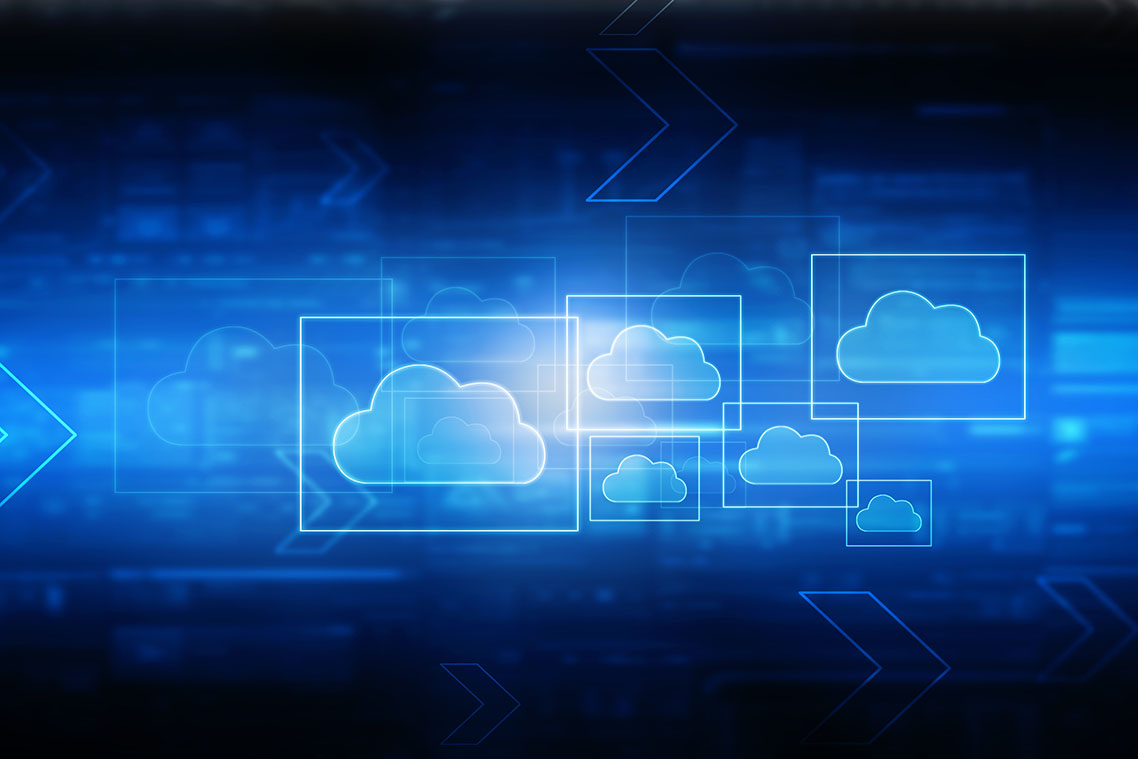
Everything You Need to Know about Performing a Citrix Receiver Cleanup
Citrix Receiver (now renamed Citrix Workspace app) is an essential component of Citrix’s virtualization infrastructure. Like any software, users can install and uninstall it many times. Citrix Receiver Cleanup is the first go-to tool you can use to remove files, components and registry values after successfully uninstalling the application. In instances where it doesn’t work, you can leverage manual processes.
What Is Citrix Receiver?
Citrix Receiver is a front-end component of Citrix Virtual Apps (formerly called Citrix XenApp) and Citrix Virtual Apps and Desktops (previously called Citrix XenDesktop). Endpoints with Citrix Receiver installed can access applications via Citrix Virtual Apps, and full desktops can access it via Citrix Virtual Apps and Desktops from a centralized system such as a server or the cloud.
You can install Citrix Receiver on multiple OSs. Various form factors such as thin clients, zero clients, Chromebooks and Raspberry Pi also support Citrix Receiver.
These technologies run on top of an independent computing architecture (ICA) protocol. Citrix Receiver did not just emerge out of nowhere; it has undergone several transformations. It all began with ICA Client software back in 1998. In 2008, it got renamed Citrix Plug-in for hosted applications and later to Citrix Online Plug-in in 2009.
Citrix officially renamed it Citrix Receiver in 2011 with the release of Citrix Online Plug-in version 13.0. In 2018, Citrix unveiled the Citrix Workspace app as a successor to Citrix Receiver.
What Are Citrix Receiver Cleanup Utilities?
Citrix Receiver is a must-have tool on endpoints that connect to Citrix sessions. Yet, like many applications out there, you have to update it constantly to achieve the best user experience (UX) and performance.
You can successfully re-install or update the application after completely performing the Citrix Receiver cleanup. Citrix has two cleanup utilities: Receiver Cleanup utility (CTX137494) and Citrix Receiver desktop cleanup utility (CTX231094).
Receiver Cleanup utility (CTX137494)
CTX137494 removes many components such as files and registry values that often remain after uninstalling Citrix Receiver for Windows. You don’t require this tool when updating to Receiver for Windows 4.4 or later. The CTX137494 utility can help with the following scenarios:
- You encounter errors while updating from an earlier version of Citrix Receiver.
- You encounter unexpected performance with Citrix Receiver after upgrading from an earlier version of Citrix Receiver.
- You can’t update to a new version of Citrix Receiver because of compatibility or uninstall issues.
Before you use the utility, you must ensure you have the read, write and execute permissions for the following registry components:
- Local user registry (HKCU)
- Local machine registry (HKLM)
- Default user profile on the PC
To use the utility, follow the steps below:
- Ensure you back up the registry. Follow the steps in this article.
- Download the utility from the Citrix website.
- Run the downloaded file with elevated privileges.
- Reboot the PC after successful cleanup.
If you wish to run the utility in unattended mode, follow the steps below:
- Open the command prompt/PowerShell, and navigate to the folder containing the Citrix Receiver Cleanup utility.
- Type ReceiverCleanupUtility.exe /silent and press Enter.
CTX137494 is great for performing a cleanup process, albeit with some limitations. For example, you can’t complete the cleanup process if you’re not an administrator with a roaming profile. Additionally, the utility may not work correctly if you don’t install it at the default location.
Citrix Receiver desktop cleanup utility (CTX231094)
CTX231094 removes desktop remnants after uninstalling Citrix Receiver for Windows.
To use the utility, follow the steps below:
- Download the utility from the Citrix website.
- Open the command prompt/PowerShell, and navigate to the folder containing the downloaded CTX231094 file.
- Type CitrixReceiverdesktopcleanup.exe /DELETE <c:\Users\\Desktop\test.csv> and hit the Enter key. In this case, test.csv is the name of the file that gets created on the desktop with all the shortcuts.
How Do I Perform a Manual Citrix Receiver Cleanup on a Windows System?
Under certain scenarios, uninstalling Citrix Receiver for Windows versions older than 4.4 may still need extra manual cleanup even after successfully running the cleanup tool. Follow these steps to perform a manual cleanup on Windows:
- Run the CTX137494 (Citrix Receiver Cleanup) utility, and reboot your PC.
- Display all the hidden folders and files by tweaking the settings in File Explorer.
- Open the %appdata% folder, and perform the following:
- Delete the \ICAClient folder if it still exists.
- Delete the \Citrix\PNAgent folder if it still exists.
- Delete the \Citrix\Receiver, \Citrix\AuthManager and \Citrix\SelfService folders if they still exist for more recent releases of Citrix Receiver.
- For Windows 7, ensure you delete the \AppData\Local and \AppData\Roaming folders.
- Repeat the items in step 3 above for the C:\Users\Default folder and C:\Documents and Settings\Default User on Windows XP.
- If the mentioned folders still exist, open the default Citrix Receiver install folder. For example, the default Citrix Receiver directory for 64-bit systems is %programfiles%\Citrix (%programfiles(x86)%\Citrix. Ensure you delete the following folders:
- ICA Client
- AuthManager
- SelfServicePlugin
Now, clean up the registry by following the steps below:
- Launch your Registry Editor.
- Navigate to the HKEY_CLASSES_ROOT, and delete the following entries if they still exist:
- Citrix.ICAClient*
- Citrix.ICAClientProp*
- ica
- Any keys whose names start with “238F” under the CLSID key
- Installer\UpgradeCodes\9B123F490B54521479D0EDD389BCACC1
- Wfica
- WinFrameICA
- Mime\Database\Content Type\application/x-ica
- ICA Client
- Navigate to HKEY_CURRENT_USER. Remove the following entries under \SOFTWARE\Citrix if they still exist:
- PNAgent
- ICA Client
- PrinterProperties
- XenDesktop\DesktopViewer
- Dazzle
- Receiver
- Navigate to HKEY_LOCAL_MACHINE\SOFTWARE or HKEY_LOCAL_MACHINE\SOFTWARE\Wow6432Node on 64-bit systems, and delete the following entries if they exist:
- Citrix\CitrixCAB
- Citrix\AuthManager
- Citrix\ICA Client
- Citrix\Dazzle
- Citrix\PNAgent
- Citrix\ReceiverInside
- Citrix\XenDesktop\DesktopViewer
- Citrix\PluginPackages\XenAppSuite
- The ICA Client, {94F321B9-45B0-4125-970D-DE3D98CBCA1C}, DesktopViewer, PNAgent, MUI, and ReceiverInsideForOnline entries under Citrix\Install
- Either CitrixOnlinePluginFull or CitrixOnlinePluginPackWeb under Microsoft\Windows\CurrentVersion\Uninstall, depending on the version of Citrix Receiver you’ve installed
- Remove any custom Receiver-side registry keys by deleting the following entries:
- HKEY_CURRENT_USER\Software\Policies\Citrix\ICA Client
- HKEY_LOCAL_MACHINE\Software\Policies\Citrix\ICA Client
- The HKEY_LOCAL_MACHINE\Software\Wow6432Node\Policies\Citrix\ICA Client key if you’re using a 64-bit system
- Navigate to HKEY_USERS and delete the following entries under SOFTWARE\Citrix if they exist:
- PNAgent
- Program Neighborhood Agent
- ICA Client
- PrinterProperties
- Dazzle
- Receiver
- Repeat step 6 for the key HKEY_USERS\.DEFAULT\Software\Citrix.
How Do I Perform a Manual Citrix Receiver Cleanup on a Mac?
As is the case with Citrix Receiver for Windows versions older than 4.4, earlier versions of Receiver for Mac (11.x and below) may also need extra manual cleanup. Follow these steps to perform a manual cleanup on a Mac:
- Uninstall Citrix Receiver, and reboot your Mac.
- Navigate to the /Applications directory, and delete Citrix Receiver.app manually.
- Navigate to the /Library directory, and delete the following files manually:
- /Internet plug-ins/CitrixICAClientPlugIn.plugin
- /LaunchAgents/com.citrix.ServiceRecords.plist
- /LaunchAgents/com.citrix.AuthManager_Mac.plist
- Navigate to the /Users/Shared directory, and delete the /Citrix/Receiver Integration folder.
- Navigate to ~/Library, and delete the following:
- /Internet plug-ins/CitrixICAClientPlugIn.plugin
- CitrixID, Config, and Module under the /Application Support/Citrix Receiver folder
- /Preferences/com.citrix.receiver.nomas.plist
- /Preferences/com.citrix.ReceiverFTU.AccountRecords.plist (added in version 11.6)
- /Preferences/com.citrix.ReceiverFTU.AccountRecords.plist.lockfile (added in version 11.6)
- Navigate to the ~/Applications directory, and delete any software that you might have added previously through the Receiver UI.
- Navigate to the /private/var/db/receipts directory, and delete the com.citrix.ICAClient.bom and com.citrix.ICAClient.plist files manually.
Access Desktops and Applications on Any Browser with Parallels RAS
Citrix Receiver is the first go-to tool for users that want to access Citrix’s desktop virtualization services.
Parallels® Remote Application Server (RAS) is another alternative for organizations that want to provide a simplified and improved desktop virtualization experience to their employees.
Parallels RAS allows employees to access their desktops and applications from any HTML5-compatible browser on any device, anywhere, without complex installation processes or manual setups. Employees can also use the HTML5 RDP Client to launch applications via a platform-specific component that detects the client and install it automatically if required.
Besides offering auto-login and printer redirection features, users can also drag and drop local files to published resources launched via Parallels HTML5 RDP Client. This simplifies access and use of virtual desktops and applications—features that are currently lacking in other desktop virtualization solutions.
Download Parallels RAS today, and get a 30 day free trial!

